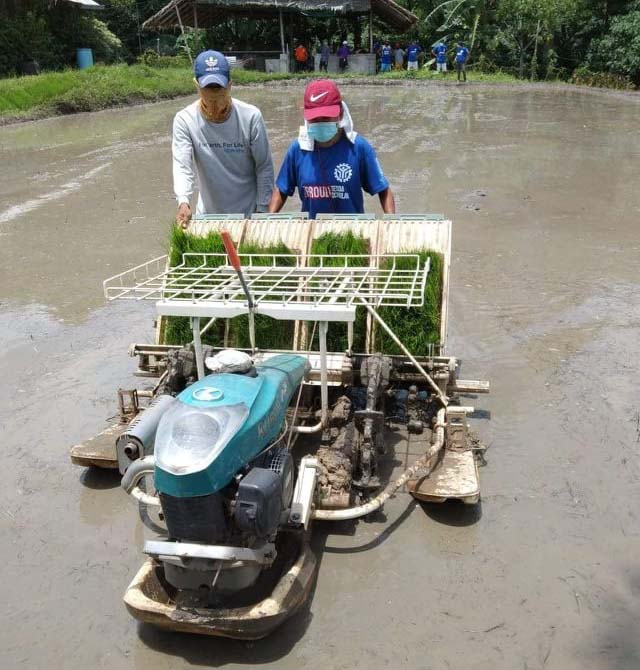
In a 2017 study by DA-PhilRice, the ability of Filipino farmers to obtain maximum production is only 80.19% despite technological advancements. The study concluded that better education, membership in an organization, securing tenurial status, and participation in training could help increase farmers’ yields.
In the following accounts, farmers tell their story of how training programs have changed their farming—for good.
JUDY S. ORENSE, 52, BAGO CITY, NEGROS OCCIDENTAL
I started rice farming in 2011 with only my childhood memory as my farming experience. Since then, I only relied on common knowledge in rice production until I attended a Farmer Field School (FFS) in a nearby farm school from June to September 2020.
I was surprised that many of the concepts they taught us were the opposites of what we practiced in our farms. For instance, I didn’t know the importance of using high-quality seeds.
Before the free inbred certified seeds came under the Rice Competitiveness Enhancement Fund (RCEF) program, I used to plant rice seeds that I bartered with fellow farmers. With the training, I understood that high yield starts with using high-quality seeds. They also taught us the importance of knowing what the crop needs through simple soil analysis, like the Minus-OneElement Technique, so that we can optimize the use of fertilizers.
I am very grateful that I got to participate in the training. As the chairperson of the San Juan del Monte Irrigators’ Association, I also share what I learned with my members during our meetings.
I just graduated so I am yet to apply what I learned from the training to my 2.4ha rice field and I am very positive that it will greatly increase my yield and reduce production cost. A lot will be changed from the preparation of seeds to harvesting.
ANGEL C. GLORIA, 56, STO. DOMINGO, NUEVA ECIJA
Rice farming has always been my way of life. When I graduated from elementary, I became a full-time manananim (rice transplanter). That’s how I knew rice production.
When my parents retired, I took over our 0.87ha farmland employing the old knowledge I inherited from them.
As irrigation water is scarce, I only devoted 0.37ha for rice production, the rest is for corn and onion. For a long time, I settled with 25-30 cavans of rice harvest from this area until last year when I joined the FFS at DA-PhilRice.
It was time-consuming as we had to leave our homes and our farms but everything was worth it. Before the training, I just leave the field as it is after transplanting and replant missing hills in about 15 days. For fertilizers, I used to apply only when I felt it’s needed.
It has also been my habit to spray pesticides when I see any insect in the field. With my years in rice farming, I never thought these practices were wrong.
Today, I visit the field regularly to inspect for any problems and prevent possible yield loss; replant missing hills within 7 days to give time for the plants to recover; apply the right amount of fertilizers in three splits at the right time; and no longer spray pesticides without thorough investigation if it’s needed or not.
Now, I am getting more from my area and I can confidently attribute it to the training I had. I harvested 38 cavans during the 2021 dry season and 35 cavans in the wet season. There’s still room for improvement but this is a good start. I also cut my production cost.
Aside from the seed and fertilizer support I get from the government, I’d say I reduced my expenditures by 5% as I no longer buy chemicals. Banking on this experience, I encourage other farmers to make time and join rice-related training programs.
It transformed my farming, and it can transform theirs, too. We already know something but we can still widen that knowledge through training. With that, you can lower production cost and increase yield.




